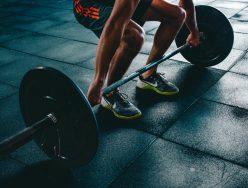Headaches are unpleasant pains in your head that can cause pressure and aches. They can range from mild to severe pain and usually occur on both sides of your head. Some specific areas where headaches can occur include the forehead, temples, and back of the neck. A headache can last anywhere from 30 minutes to a week. Tension headaches aren’t the only type of headaches that occur. Other headache types include: Cluster headaches are severely painful headaches that occur on one side of the head and come in clusters.
This means you experience cycles of headache attacks, followed by headache-free periods. Often confused with migraines, sinus headaches co-occur with sinus infection symptoms such as fever, stuffy nose, cough, congestion, and facial pressure. These headaches are intense or severe and often have accompanying symptoms in addition to head pain. Symptoms associated with a migraine headache include nausea, pain behind one eye or ear, pain in the temples, seeing spots or flashing lights, sensitivity to light and/or sound, temporary vision loss, and vomiting. A migraine headache will cause intense pain that may be throbbing and will make performing daily tasks very difficult.

A migraine headache will cause intense pain that may be throbbing and will make performing daily tasks very difficult. Fortunately, most tension headaches will go away with over-the-counter treatments. These include acetaminophen, aspirin, and ibuprofen. Because most headaches are stress induced, taking steps to reduce stress can help relieve headache pain and reduce the risk for future headaches. These steps may be “heat therapy”––such as applying warm compresses or taking a warm shower––massage, meditation, neck stretching, and relaxation exercises. And sometimes for eye strain, cold is effective.
Doctors are not always sure what causes migraines but there is a lot of help for the sufferer. First of all, some physicians believe that headaches and migraines are inherited. Gluten, dairy, and nitrates cause headaches and migraines. Artificial sweeteners can not only cause a headache and migraines but also lead to congestion and sinus problems. Histamine intolerance caused by processed foods can cause low levels of diamine oxidase in the bowels. Environmental allergies and immune reactions not only cause those problems and gas, they can also lead to headaches. Eliminating these products one at a time for a period of two weeks can be the cure to a lot of your headaches. Charting how you feel such as fogginess or other problems can also be helpful. And weather can be another factor. You may experience migraines when there are any hormonal changes during menopause as well as any time during your menstrual cycle or pregnancy. Some foods and drinks––such as aged cheese, alcohol, and food additives like nitrates (in pepperoni, hot dogs, lunchmeats) and monosodium glutamate (MSG)––may be responsible for up to 30 percent of migraines.
Low magnesium levels have been linked to migraines. Magnesium can affect the blood vessels in the brain, which is a major cause of migraine headaches. Magnesium is also great for smooth muscle relaxation. Cutting back on high histamine foods definitely, decreases a migraine and headache occurrences. These foods include pickled items, vinegar, fermented foods, leftover items, alcohol, and naturally occurring histamine foods like avocado and tomato.
Stress can cause headaches for a number of reasons. It disrupts our hormone balances and causes blood/sugar problems and muscle tension. Chronic stress defaults the body into fight or flight mode and we are never in a relaxed state to repair and regrow. Seeking out times to relax and unwind is so important. Many people have had success with meditation, prayer, and yoga. When we focus on a positive and let all the other worries melt away, our bodies begin to relax and repair.
Some pressure points for headaches and migraines include rubbing the skeleton socket under the eyes, sides of the socket of the eyes, above the forehead, behind the ears, on the upper sides of the head, back of the neck, right above the shoulder blades, and the space between your fingers and your feet. Taking your body and putting your legs against the wall or a chair helps bring blood back to the brain and away from your feet, legs, and upper torso.
There are many yoga moves that can help with relaxation. Child’s pose calms the nervous system and is a great stress buster. The standing forward bend calms the mind. It also boosts blood supply to the brain. The bridge poser calms the brain and decreases anxiety. The two-legged forward bend relieves a headache sensory overload. The lotus pose and twist as well as the cat-and-cow downward dog pose brings blood circulation to the head and calms the mind.
Lastly, don’t feel afraid to talk to your doctor. There are many types of things you can do that can help, without a lot of medicine, including massages, chiropractic care, and using a foam roller to eliminate pain. Remember, more than one-third of all Americans have to deal with a headache or a migraine often. You are not alone.
Was this Article Helpful?
If this article was helpful to you, please consider linking this article to your own blog or sharing this through the social buttons below. You will also find other great articles at “Expert Advice“.
- 3shares
- 1Facebook
- 0Twitter
- 2Pinterest
- 0LinkedIn
Christina Chapan
Latest posts by Christina Chapan
- Body Language for Personal Trainers,Teachers and Group Instructors - January 12, 2020
- Allergies + Exercise: An Overview - January 9, 2020
- The Safety of Running Solo - January 5, 2020


















